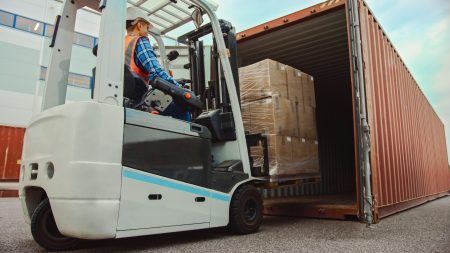When Buying a New Shipping Container Is Worth It
Thursday, October 23rd, 2025Buying a new storage container can be one of the best investments your business makes, especially if long-term reliability, security, and quality matter to you. Whether you are in logistics, construction, or retail, the condition of your container affects your operations, your brand image, and your bottom line.
Think of it like buying a new vehicle. You know exactly what you are getting, you avoid previous wear and tear, and you can count on consistent performance. When you buy used, you are always taking a chance on how well the container was maintained or what it has been through.
If you want peace of mind, consistent performance, and a product built to last, buying new is often the wiser choice. Here is why:
1. New Containers Are Ready for Use Immediately
New, one-trip containers are built to international shipping standards and arrive in perfect working order. You do not have to worry about hidden damage, corrosion, or costly repairs. These containers are seaworthy and load-ready from day one, meaning you can start using them right away for storage, shipping, or on-site work.
For companies that need reliability and speed, new containers remove the uncertainty that often comes with used options. You can load your cargo and move it with confidence.
2. You Can Customize Your Container from the Start
Customization is a major advantage when buying new. You can choose the color, design, and layout that fits your needs. Whether you want a specific paint color, your business logo, or added features such as windows, ventilation, or electrical setups, new containers give you flexibility from day one.
Businesses often use custom-built containers for on-site offices, pop-up shops, or mobile workspaces. Buying new makes this easier because modifications are done during production rather than retrofitted later. This saves both time and money while ensuring professional results.
3. A Smart Long-Term Investment for Growing Businesses
If your company consistently uses containers, buying new ones makes strong financial sense. Large organizations, project managers, and construction firms that juggle multiple job sites know that renting adds up quickly.
Buying a new storage container means you always have access to your own equipment without worrying about availability or rental fees. It is a one-time purchase that can last decades with proper care.
For smaller contractors or startups with unpredictable projects, renting or buying used might make sense at first. However, once your storage needs become consistent, owning a new container becomes the smarter and more cost-efficient option.
4. More Cost-Effective Than Long-Term Renting
If you expect to rent a container for more than 18 months, you should consider buying instead. Over time, the cost of continuous rental payments can exceed the price of purchasing a new one.
Owning your container means you can use it whenever you need it, for as long as you need it, without recurring rental costs. It is a simple math problem that many businesses overlook until they calculate how much they have spent on rentals over the years.
5. Built to Last with Corrosion-Resistant Materials
New containers are manufactured using Corten steel, a material specifically designed to resist corrosion and weather damage. This ensures long-term durability and a longer lifespan than older or refurbished models.
Each new container meets strict ISO certification standards and is tested for heavy loads and rough environments. These standards ensure the container can handle forklift loading, stacking, and international transport safely.
When you buy new, you know your container has not been exposed to harsh chemicals, saltwater, or rough handling. You control its entire lifespan from the moment it is delivered.
6. Guaranteed Quality and Compliance
New shipping containers are certified by organizations like Lloyd’s Register and Bureau Veritas, guaranteeing that they meet international safety and performance standards. This level of quality assurance is critical if you plan to use containers for overseas shipping, industrial projects, or government contracts.
You also eliminate the risk of hidden structural issues that could lead to leaks, rust, or contamination. That peace of mind is something used containers cannot offer.
7. Perfect for Branding and Professional Image
New containers look clean, modern, and professional. If your business uses containers for retail displays, mobile offices, or event spaces, presentation matters. A new container creates a stronger brand impression and shows your clients that you care about quality and professionalism.
Adding custom colors and company branding to a new container helps reinforce your identity and builds trust with customers and partners.
When Buying New Makes the Most Sense
Buying new is the right choice when:
- You plan to use the container long-term
- You want to customize or brand it for business use
- You cannot risk downtime or equipment failure
- You need ISO-certified, export-ready units
- You want predictable performance with zero maintenance surprises
If these apply to your business, buying new gives you a clear advantage over renting or purchasing used containers.
Choose Transocean Equipment Management for Your Next Container
At Transocean Equipment Management, we supply high-quality, new shipping containers built to international standards. Whether you need containers for shipping, storage, or modification, our team helps you find the best fit for your operation and budget.
Our experts will walk you through customization options, delivery details, and long-term value so you can make a confident purchase decision.
Call us today to learn more about our new containers and how they can support your business.










